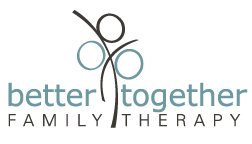When ADHD and Depression Combine to Block Your Progress
Advice from our ADHD Therapists for Children, Couples and Families
We treat adults, children, teens, couples, and families with ADHD, so we get a lot of practice implementing these tools! During the pandemic, having ways to get unstuck has been especially important. We are all falling into the “proscrastination pandemic,” some if not all of the time.
ADHD, Depression, and Motivation
For adults and children with ADHD, the ability to attend to a task depends on motivation. If the task interests you, you are automatically motivated. If a task isn’t inherently interesting, your ability to attend to it will depend on your overall motivation to get it done.
Depression drains your motivation and leaves you feeling disinterested in nearly everything. When these 2 conditions combine, it can stop you in your tracks. You may still be able to attend to tasks when you’re under pressure from your boss or spouse, but motivation for tasks on your personal to-do list will likely be in short supply.
Fortunately, with some guidance you can start moving toward your goals again. Here’s what we tell clients in this situation.
1. Increase your Exercise
Exercise gives you the most bang for your buck by targeting symptoms of both conditions at once. You may need the tools from steps 2 and 3 to make this happen. But it’s well worth the effort.
Exercise produces dopamine, which is a key ingredient in motivation. Dopamine is also linked to attention for those with ADHD, and can be a powerful mood booster.
If you’re having trouble getting motivated to exercise, start small. Climb the stairs a few extra times, give the dog an extra walk, park further from the grocery store. Like gadgets? A pedometer or fitness tracker can give you instant feedback about how much you’re moving during the day, increasing your drive for mastery (motivation).
2. Have a Plan
List a few things you’d like to accomplish. You may want to map them out in a flow chart or diagram. Seeing it in a picture often helps those with ADHD.
Now pick one to do first. If you’re finding yourself bogged down with indecision (another symptom), close your eyes and point to one on the page.
Now define what ONE week’s or one day’s worth of progress toward that goal would look like. For example, if your goal is to get in shape, this week’s goal might be to do 3 sets of pushups. Or cut out your after dinner glass of wine 50% of the time.
Keep it reasonable. Tell your perfectionistic side to take a hike. You’re trying to work, here.
3. Make Appointments
We don’t mean those dentist appointments you’ve been delaying. Get out your calendar and schedule the thing you’re hoping to do (like those pushups or your nightly glass of water).
Treat these like you would treat a mandatory meeting at work. Set alarms or reminders if you need to. When those alarms go off, walk to the place where you’ll do the task BEFORE hitting “dismiss.”
The goal is to do what you planned to do, not what you feel like doing. Depression will often block you from feeling like doing anything at all. If you expect that feeling and take a step forward with it rather than fighting it, you’ll feel better afterward.
Tactical obstacles still might come up. (That mandatory work meeting is scheduled during your exercise time.) Be sure to move the appointment you created to another time in the week rather than just letting it go.
4. Practice Daily Self Acceptance
This can be especially difficult when ADHD increases your number of mistakes. And Depression tells you it’s all your fault. Having a regular practice of letting go and moving forward can help you reset at the end of each day and give yourself a chance to have a better tomorrow.
Use journaling, prayer, metta meditation, or another ritual of your choosing to close out your day. (Don’t forget to make it an official appointment!) If you’d like a tool to help with this, try “The Self Compassion Card Deck” by Chris Willard PsyD, Mitch Abblett PhD, and Tim Desmond LMFT.
The cards contain prompts such as “If a child told you they were a failure because of some small mistake, how might you respond? Can you try using the same words and tone for yourself?” You can create cards like this for yourself in a moment of creativity if you’d like.
5. Don’t Expect to do it Alone
A therapist, ADHD life coach, virtual assistant, or friend can make a great accountability partner and remind you of all that you’ve accomplished. Your smartphone can also be used in this way. Just be sure to pair your task reminders with reminders to have self compassion when it doesn’t go 100% as planned.
6. Lather, Rinse, Repeat
Return to steps 1-3 at the same time every week (schedule it!). Give yourself credit for the things you did well. (Saying it out loud or writing it down increases the impact.) Note any obstacles that came up and make a plan to get around them in the coming week.
Check out our blog for more posts about getting things done with ADHD, and follow us on Facebook to be alerted when new content is posted!
